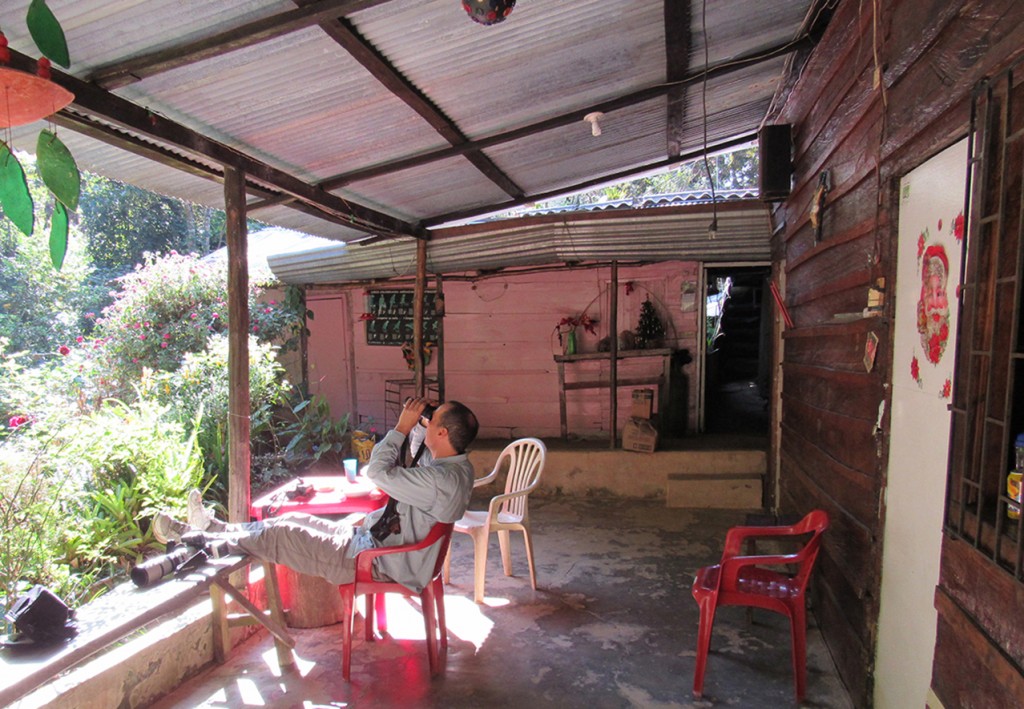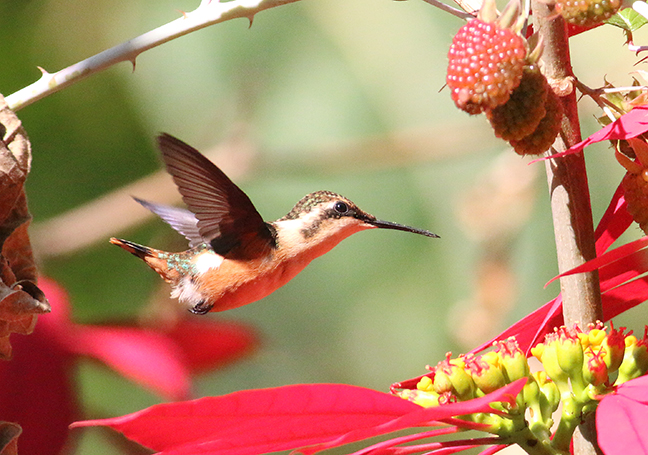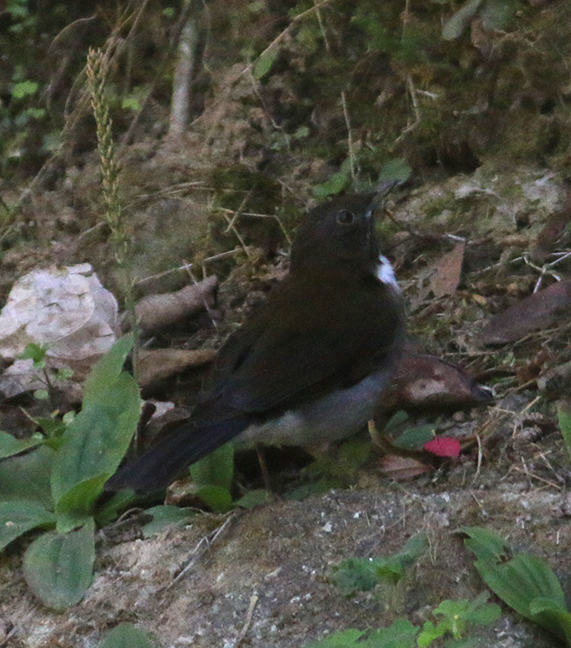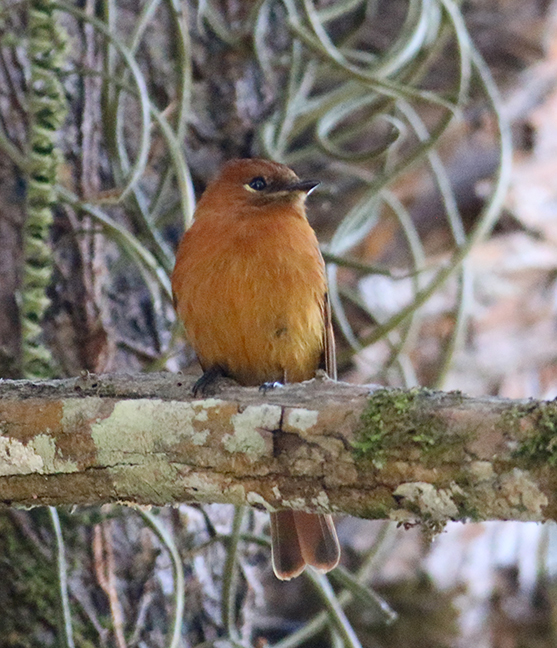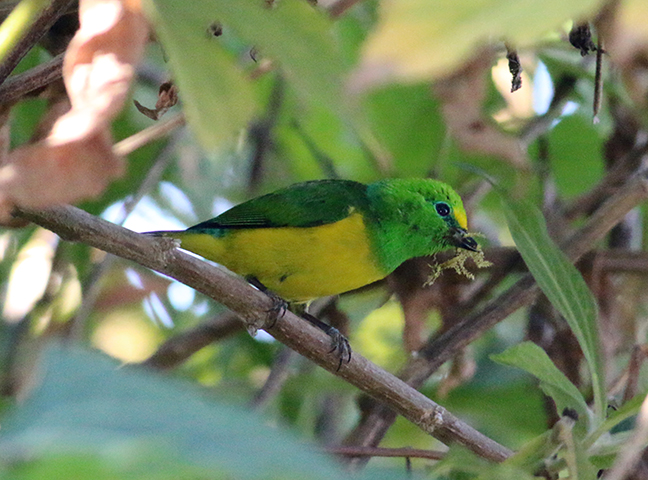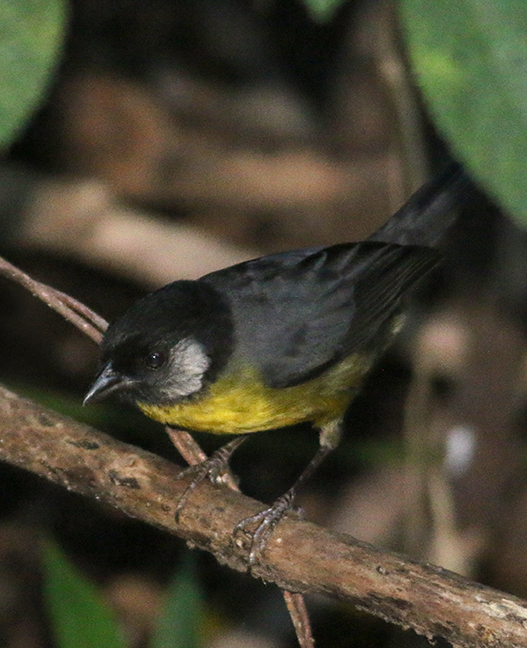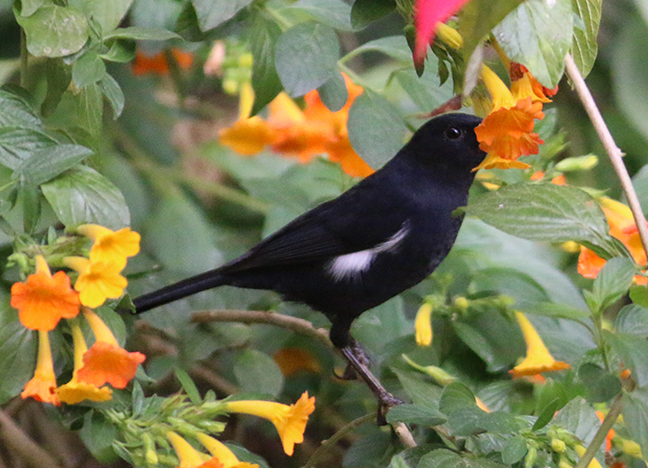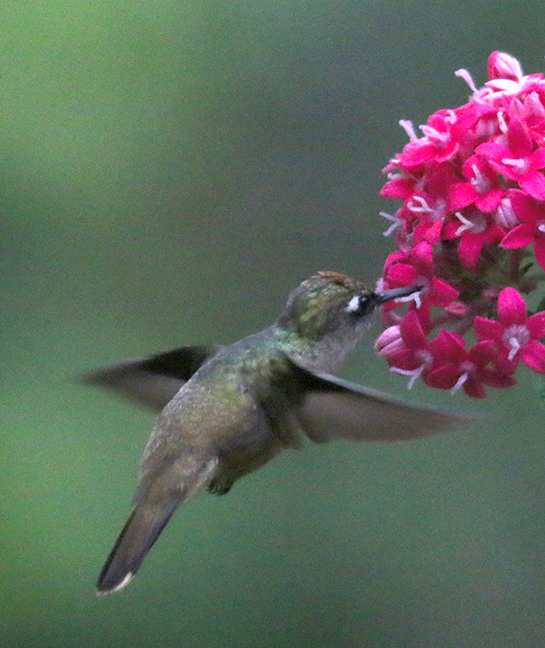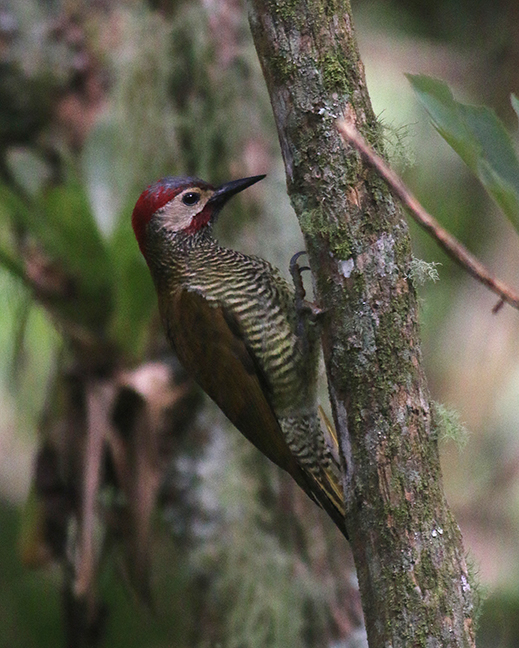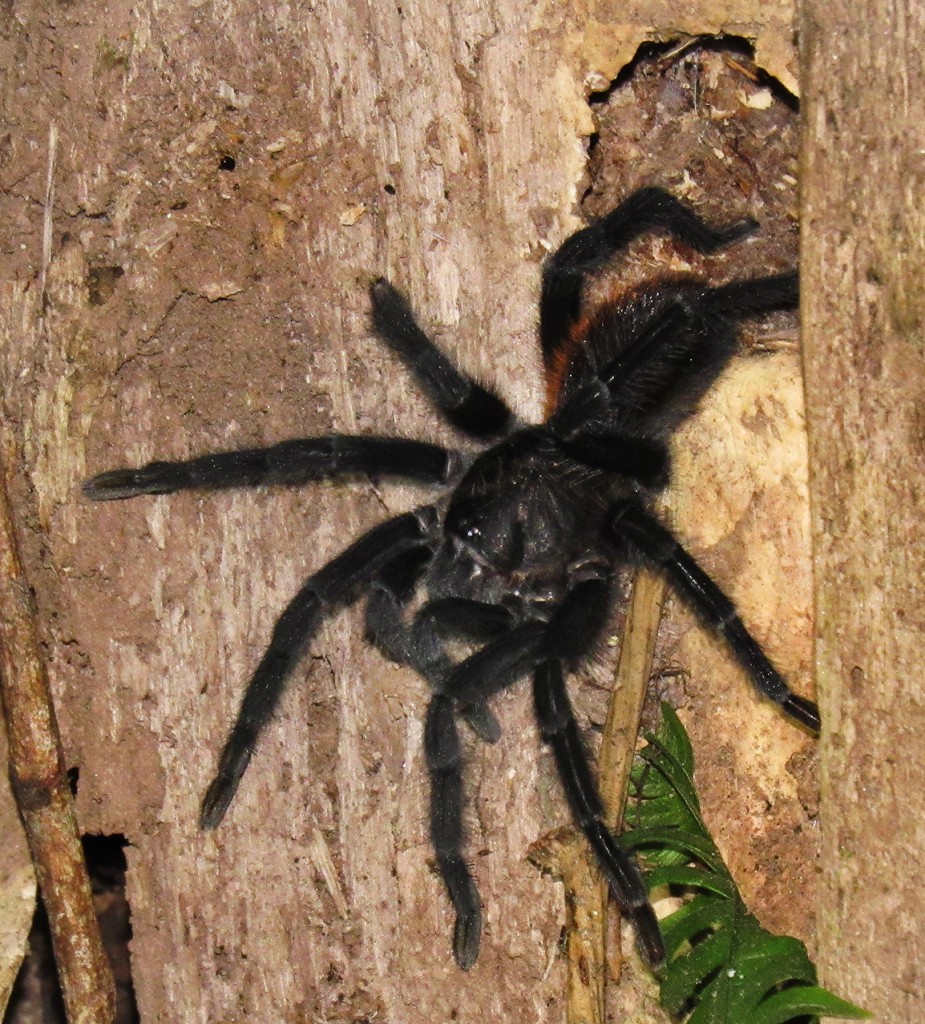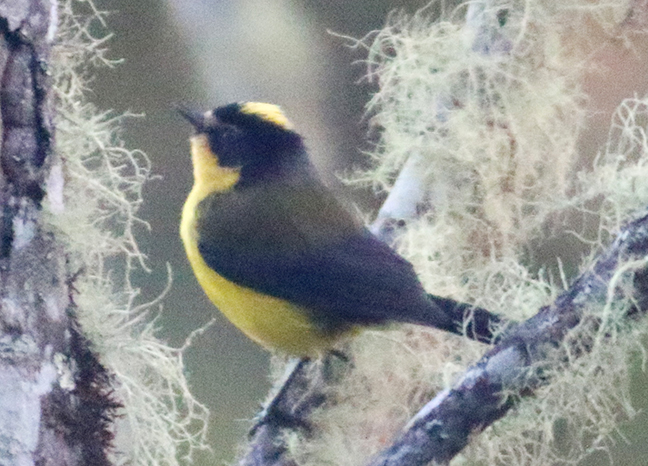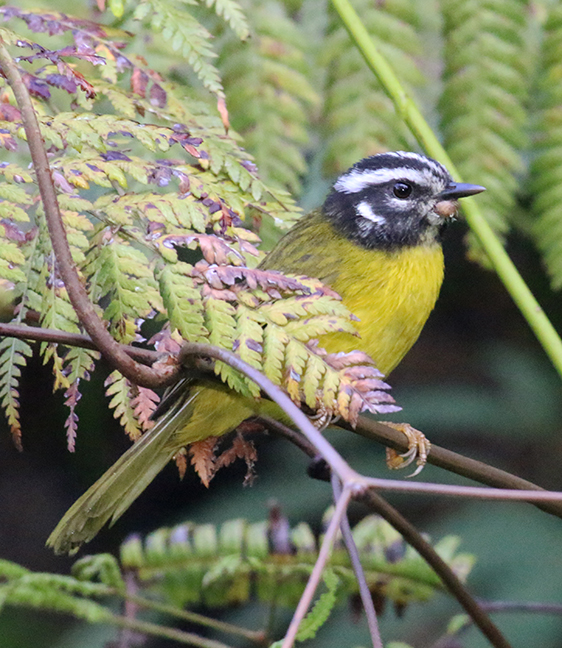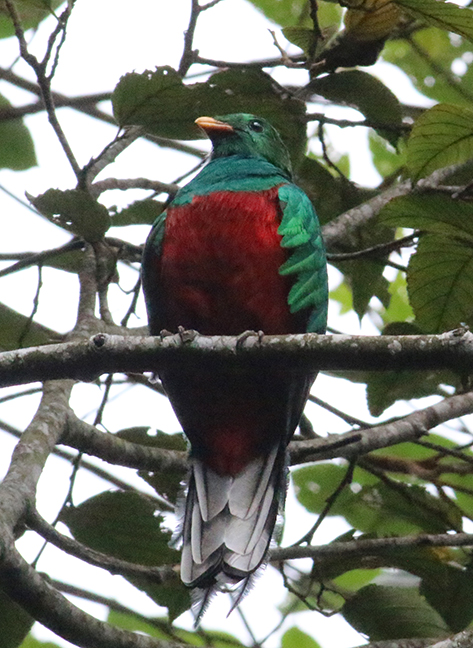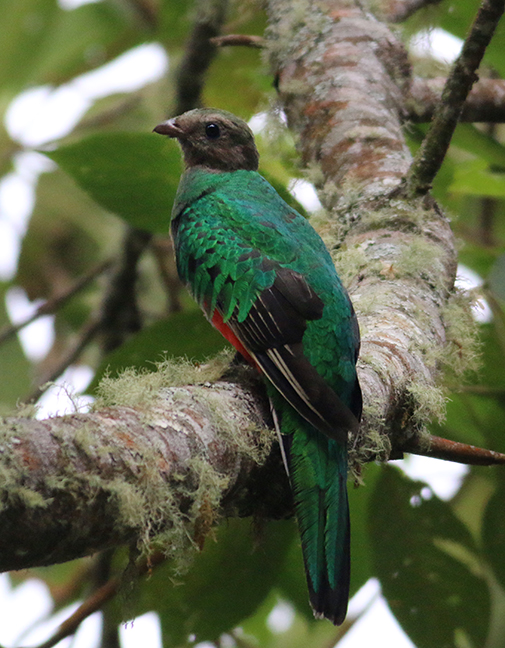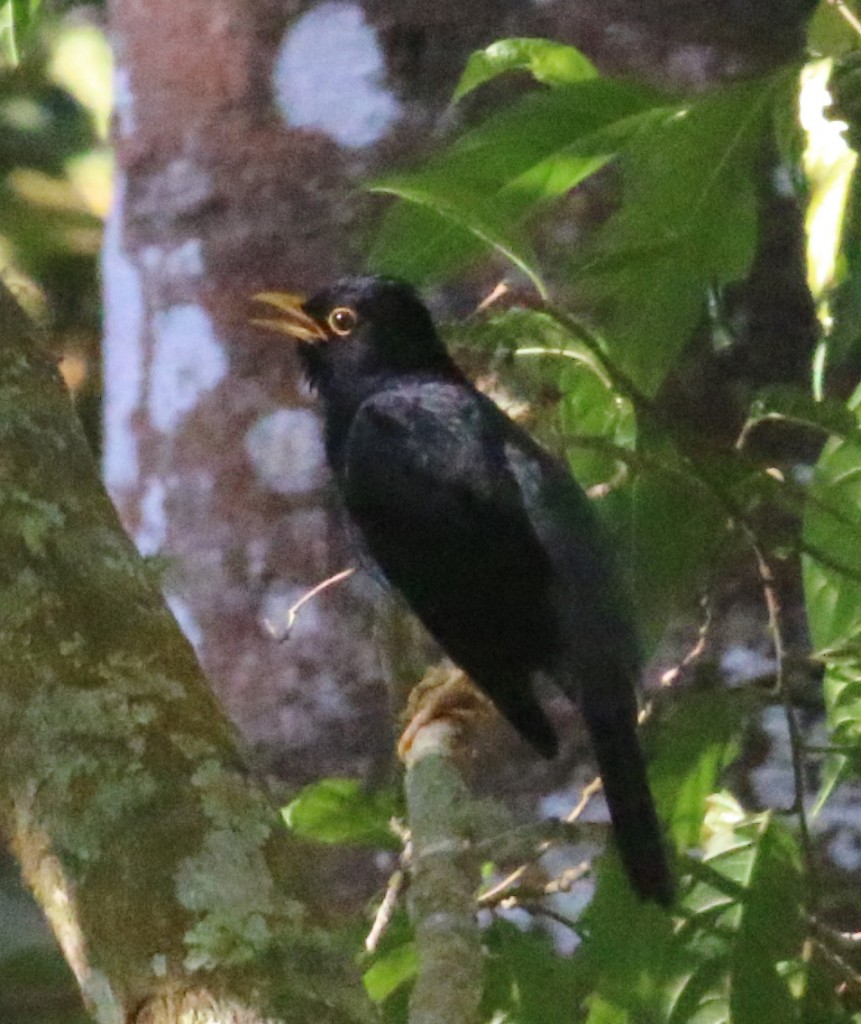The ProAves El Dorado Reserve starts at ~5,700 ft above sea level and extends further up the ridge. In the last entry I described some of the birds that we saw on the way up towards this location; here we’ll cover the upper reaches of the road, starting just below the reserve and working upward. For those who might be traveling here, or who have been here before, this section has a couple landmarks; a short distance down the road from the Reserve at ~5,400 ft there is a small tienda surrounded by lovely flowering bushes called La Tienda de Las Rosas, and about half a mile or so further up the road is the Palo Alto farm/hostel, and then the start of the Reserve. We were scheduled to stay at Palo Alto, but because it is being renovated, we stayed at the tienda, which is a tiny roadside store that has a very sparse adjacent room with 4 bunkbeds. At first we were a bit wary of staying here, since it is not your typical vacation housing, but we had a wonderful time here as guests of Elvira and Tonio in the middle of the forest.
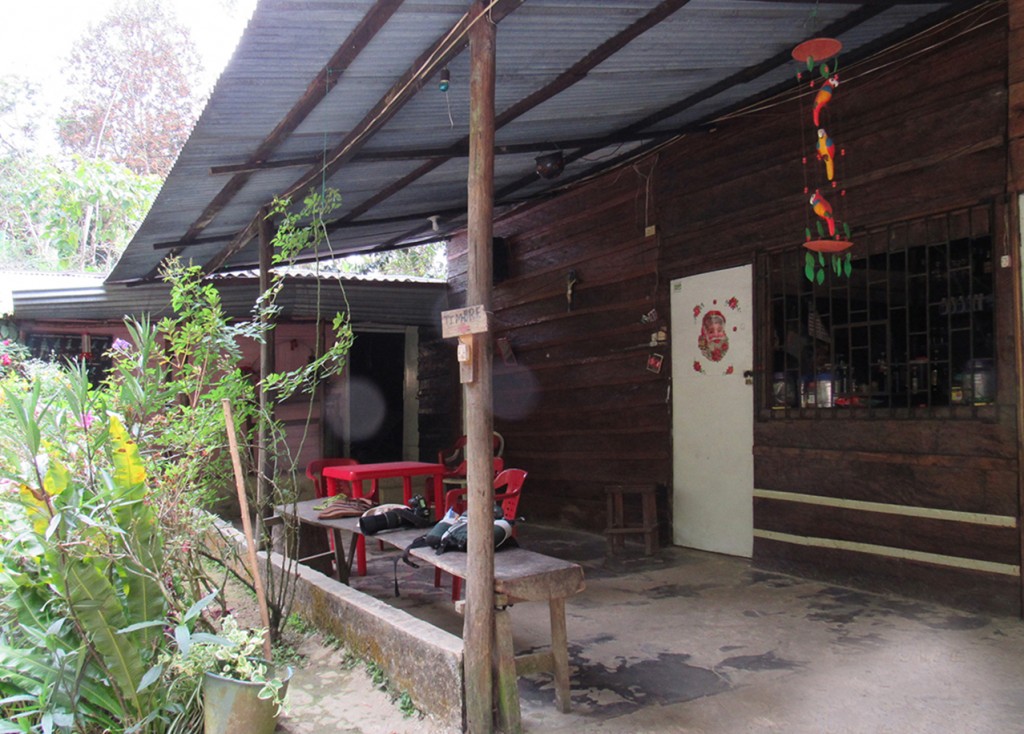
The Tienda de los Rosas, alongside the road to San Lorenzo Ridge. The ‘store’ where they sell cheeses, jams, water, etc. is behind the bars and the door with ‘Papa Noel’. Our room is to the left of Papa Noel.
We stayed here two nights, walking up the road towards Palo Alto and El Dorado Preserve, or downhill. We had the best meals of our trip here, and the front of the tienda was a great place to kick back and watch the humingbirds. Hey, when you’re birding it’s about proximity, not about luxury. The flowers and feeders here are frequented by Green Violetear, Pale-bellied Hermit, Violet-crowned Woodnymph, White-sided Flowerpiercer, Rusty Flowerpiercer, and Blue-naped Chlorophonias. It also draws the occasional endemic Blossomcrown and Santa Marta Woodstar, each of which we saw here and nowhere else. The adjacent forest had guans, Channel-billed Toucanets, Santa Marta Brush-finches, White-lored Warblers, and Montane Foliage-gleaners among the highlights.
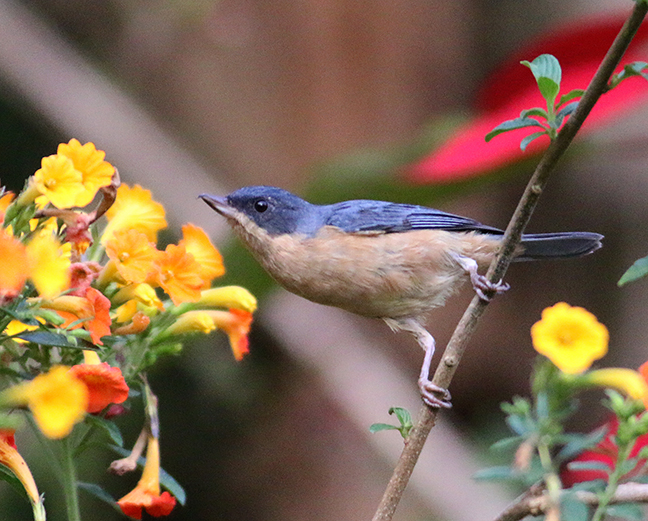
A Rusty Flowerpiercer that was competing with the more numerous White-sided Flowerpiercers by the tienda flowers.
We stayed one night at an even higher elevation (~7,700 ft), by the Telecom tower. Once again this is not your typical tourist stopping point, with a small room that contains four bunkbeds and an adjacent tiny kitchen/dining area where the Telecom employee Leonardo prepared meals for us. The views towards the central part of the Sierra Nevadas was gorgeous, with a few snow-capped peaks visible in the distance. Remember that we are only ~10 degrees north of the equator! This highest part of the San Lorenzo Ridge is ripe with endemics and near-endemics; on a morning walk uphill from here the highlights were Santa Marta Warblers, Santa Marta Mountain-tanagers, Streak-capped and Rusty-headed Spinetails, Brown-rumped Tapaculo, Yellow-crowned Whitestarts, White-tipped Quetzals, and Golden-breasted Fruiteater. All great birds.
We stopped for occasional birding breaks on the way downhill to break up the monotony of the long slow drive, with our next destination being the Los Flamencos Sanctuary in the hot dry coastal Guajira region. On the way to Santuario del Los Flamencos we paused after a toll booth because some birds were perched nearby. While focusing my binocs to view a falcon, the knob of my focusing wheel broke off from the underlying focusing gear. Despite extensive efforts, the bins were useless for the rest of the trip. Luckily Sebastian had an emergency pair of 8x25s with him, so I wasn’t completely up the creek without the proverbial paddle, but from here on I will never go on a birding trip without a pair of backup bins.
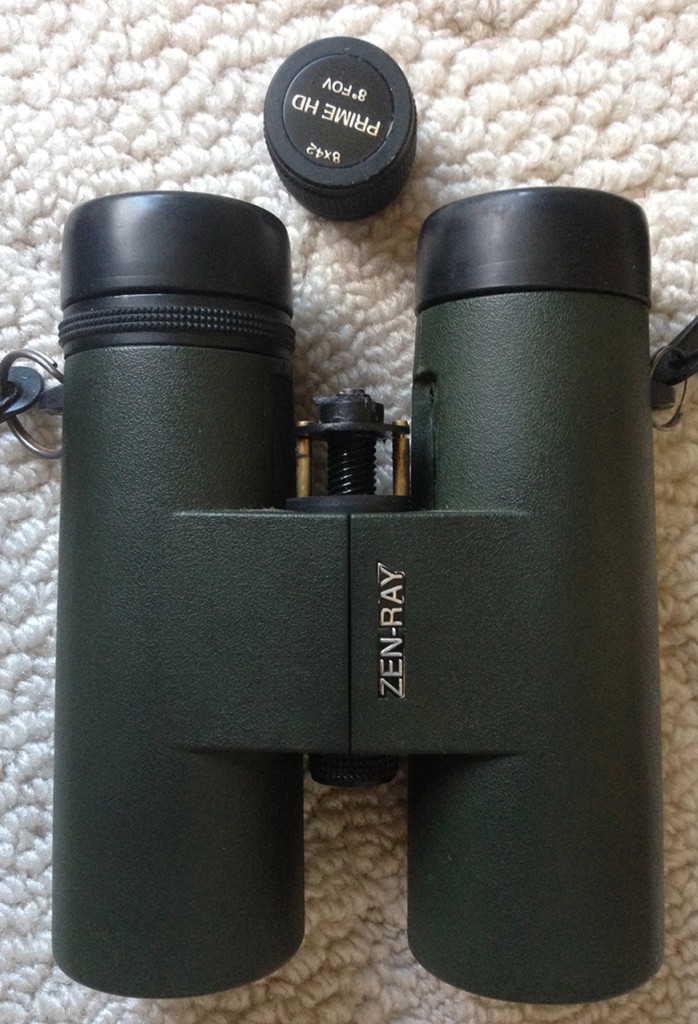
Bins are not very useful unless you can focus them, and these bins couldn’t. Learn from me and always bring a backup pair on vacation. Zen-Ray replaced the bins no-questions-asked within a week of my returning back to the USA.
Next entry: Los Flamencos
